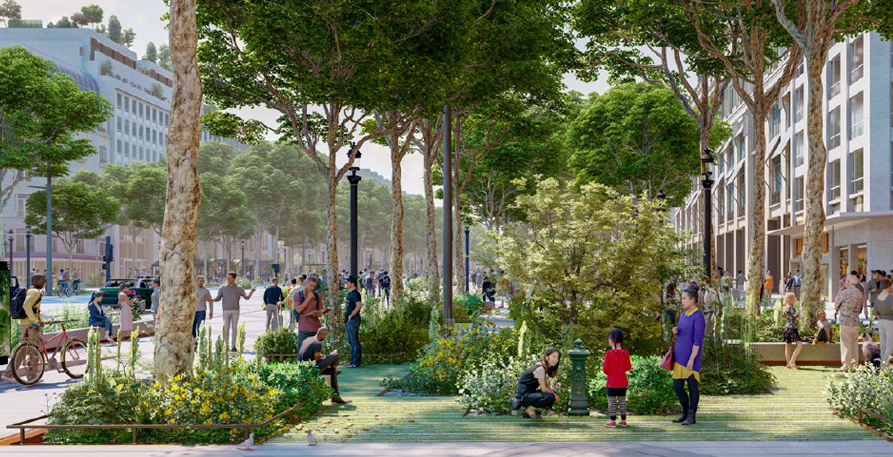
By Jeremy Williams
The Champs Élysées may be the most famous street in the world. It’s certainly a contender, with the Arc de Triomphe and the Place de la Concorde. It’s home to the flagship stores of some of the world’s most exclusive brands and hosts the finishing line of the Tour de France.
Some 300,000 tourists flock to the boulevard every day, and when they get there they find that it is choked with eight lanes of queueing traffic and not nearly as glamourous as they were led to believe. The locals already know this of course and actively avoid it, with research showing that Parisians only make up 5% of pedestrians on the avenue.
The traffic and pollution is something of a betrayal, a “broken promise” as the aforementioned survey puts it. Champs-Élysées means Elysian fields, the pastoral heaven of Greek mythology and pretty much the opposite of eight lanes of cars. For hundreds of years, it was a space for people and gardens, for recreation and socialising – as well as flag-waving parades and patriotism, naturally.

Its role in the city has been gradually eroding and the change has accelerated since the 1970s. Walkers have given way to cars. The gardens at the end have been fragmented by traffic routes and are under-used. The buildings have been taken over by high-end retail and offices, global brands for global audiences.
It has become a ‘hyperplace’ – globalised to the point of being contentless, belonging to everyone and no one. In fact, I remember the Champs-Élysées serving as a case study for a lecture on globalisation during my cultural studies degree.
Can the Champs-Élysées be reclaimed? Under the leadership of the pioneering mayor Anne Hidalgo, Paris has already experimented with car-free days, citizen gardening, and a host of new measures to green the city. Among them is a ten-year plan to ‘re-enchant’ the Champs-Élysées. There has been extensive research and a public exhibition on its history and significance. After lots of consultation, this month saw the approval of a major plan to transform the boulevard.
Under these plans, the space will become “an urban demonstrator of a sustainable, desirable and inclusive city.” Reducing traffic is an important starting point, reducing the number of lanes and creating continuous walking and cycling routes. Some areas will be pedestrianised entirely, and new surfaces and electrification of vehicles will help to reduce noise.
More space on the avenue will create opportunities for catering, and the plan calls for a diversity of stalls and street food, as well as gardens, playgrounds and spaces for exercise and events. Green space will be increased, with existing trees incorporated into new plantings and banks that will create green ‘lounges’.

Biodiversity will increase, and the whole space will be enhanced as a ‘green lung’ for Paris, reducing pollution, capturing rainfall and increasing shade.
This is an interesting exercise in its own right, and I look forward to visiting Paris and seeing it for myself in a few years time. I think it’s also symbolic of how big cities are re-thinking public space and who is served by them. The re-imagined and re-claimed Champs-Élysées demonstrates a number of different trends that I reckon will define 21st-century urbanism, undoing mistakes of the past and reaching a healthier and greener balance:
- People and bikes instead of cars
- Local placemaking over globalised non-places
- Slow spaces for lingering in rather than moving through
- Greenery and nature over concrete
First published in The Earthbound Report.
4 replies »